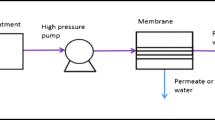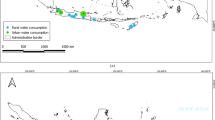Abstract
The article presents environmental aspects related to the use of geothermal waters of the Lower Jurassic in the area of the Szczecin Trough. The research area located in the north-western part of the country has been successfully using underground waters of the Lower Jurassic since the 1990s to generate thermal energy at two geothermal heating plants located in Pyrzyce and Stargard. In the case of the area in question, it was proposed a hypothetical geothermal doublet located in the vicinity of the city of Choszczno, for which numerical simulations were carried out for different variants of the locations of the wells and the intake capacity. On the basis of the obtained results, the environmental effect that could be achieved in the case of the analyzed investment was estimated. Reduction in pollutants emission might be expected on the global scale. Even taking into account the emission linked to the electricity consumed (more than 81% of electricity in 2020 in Poland was produced based on fossil fuels, the share of had coal is about half of them). Local reduction in emission is obvious, and it is strictly related to the amount of reduction of fuels consumption. Taking into account the health resorts and thermal pools that utilize groundwater operating in the Polish Lowlands, the chemical composition of the underground waters extracted in the region of Choszczno was also analyzed, and the possibilities of their use for therapeutic and balneotherapeutic purposes were indicated.









Similar content being viewed by others
Data availability
All data are available.
References
Atkinson, P. G., Celati, R., Corsi, R., & Kucuk, F. (1980). Behavior of the Bagnore Steam/CO2 geothermal reservoir, Italy. Society of Petroleum Engineers Journal, 20, 228–238.
Bujakowski, W., Barbacki, A., Miecznik, M., Pajak, L., Skrzypczak, R., & Sowizdzał, A. (2015). Modelling geothermal and operating parameters of EGS installations in the lower triassic sedimentary formations of the central Poland area. Renewable Energy, 80, 441–453.
Carslaw, H. S., & Jaeger, J. C. (1948). Conduction of heat in solids. Calderon Press.
Górecki, W. (red.), Szczepański, A., Sadurski, A., Hajto, M., Papiernik, B., Kuźniak, T., Kozdra, T., Soboń, J., Szewczyk, J., Sokołowski, A., Strzetelski, W., Haładus, A., Kania, J., Kurzydłowski, K., Gonet, A., Capik, M., Śliwa, T., Ney, R., Kępińska, B., Bujakowski, W., Rajchel, L., Banaś, J., Solarski, W., Mazurkiewicz, B., Pawlikowski, M., Nagy, S., Szamałek, K., Feldman-Olszewska, A., Wagner, R., Kozłowski, T., Malenta, Z., Sapińska-Śliwa, A., Sowiżdżał, A., Kotyza, J., Leszczyński, K. P., & Gancarz, M. (2006). Atlas of geothermal resources in the Polish Lowlands. AGH KSE, Kraków.
Górecki, W., Sowiżdżał, A., Hajto, M., & Wachowicz-Pyzik, A. (2015). Atlases of geothermal waters and energy resources in Poland. Environment and Earth Science, 74(12), 7487–7495.
Kępińska, B. (2018). Przegląd stanu wykorzystania energii geotermalnej w Polsce w latach 2016–2018. Technika Poszukiwań Geologicznych Geotermia, Zrównoważony Rozwój Nr, 1(2018), 11–27.
KOBiZE. (2015). Wskaźniki emisyjności zanieczyszczeń ze spalania paliw kotły o nominalnej mocy cieplnej do 5 MW. Warszawa.
KOBiZE. (2019). WSKAŹNIKI EMISYJNOŚCI CO2, SO2, NOx, CO i pyłu całkowitego DLA ENERGII ELEKTRYCZNEJ na podstawie informacji zawartych w Krajowej bazie o emisjach gazów cieplarnianych i innych substancji za 2018 rok.
Latour, T., & Smętkiewicz, K. (2012). Właściwości fizykochemiczne i chemiczne wód geotermalnych i ich zastosowanie lecznicze ze szczególnym uwzględnieniem wody z odwiertu PIG/AGH w Uniejowie. Biuletyn Uniejowski, 1(2012), 79–93.
Miecznik, M. (2013). Błąd szacowania potencjału dla wytwarzania energii elektrycznej w instalacjach binarnych typu ORC związany ze zmiennością parametrów termodynamicznych wody geotermalnej. Technika Poszukiwań Geologicznych 52.
Official websites: www.geotermia-uniejow.pl.
Papiernik, B., Michna, M., Machowski, G., Górecki, W., Machowski, W., Zubel, E., Żołdani-Szelest, A., & Rams, J. (2012). Opracowanie szczegółowego modelu statycznego ośrodka geologicznego składowiska dolnojurajskiego w rejonie Choszczna. Analiza ryzyka składowania CO2 w rejonie struktury Choszczna. (Zadanie 1.17. Zarządzanie ryzykiem geologicznego składowania CO2. Konsorcjum z PIG Warszawa, INiG, GIG, PAN, (UMOWA Nr 2/SEK/2009) Kierownik tematu: A. Wójcicki, Realizacja: 2008–2012 Finansowanie: Narodowy Fundusz Ochrony Środodowiska i Gospodarki Wodnej.
PSE Polskie Sieci Elektroenergetyczne (Polish Power System Operator). (2021). Zestawienie danych ilościowych dotyczących funkcjonowania Krajowych Sieci Elektroenergetycznych w 2020 roku (Summary of quantitative data on the operation of the National Electricity Networks in 2020, in Polish). https://www.pse.pl/dane-systemowe/funkcjonowanie-kse/raporty-roczne-z-funkcjonowania-kse-za-rok/raporty-za-rok-2020. Accessed 23 September 2021.
Pruess, K., Oldenburg, C., & Moridis, G. (2012). TOUGH2 user’s guide, Version 2.1, ReportLBNL-43134, Lawrence Berkeley National Laboratory, Berkeley, Calif.
Sowiżdżał, A. (2009). Analiza geologiczna i ocena zasobów wód i energii geotermalnej formacji mezozoicznej niecki szczecińskiej. Rozprawa doktorska, AGH Akademia Górniczo-Hutnicza im. Stanisława Staszica w Krakowie.
Sowiżdżał, A. (2018b). Geothermal energy resources in Poland—overview of the current state of knowledge, 2018b. Renewable and Sustainable Energy Reviews, 82, p. 3, pp. 4020–4027.
Sowiżdżał, A. (2018a). Geothermal energy in Poland. Selected aspects of geothermal resources development. In K. Mudryk, & S. Werle (Eds.), Renewable energy sources: Engineering, technology, innovation. Springer Proceedings in Energy. Springer, Cham.
Sowiżdżał, A. (2010). Perspektywy wykorzystania zasobów wód termalnych jury dolnej z regionu niecki szczecińskiej (północno-zachodnia Polska) w ciepłownictwie, balneologii i rekreacji. Przegląd Geologiczny, 58, 613–621.
Straburzyńska-Lupa, A., & Straburzyński, G. (2008). Fizjoterapia z elementami klinicznymi, PSWL, pp. 1076.
Wachowicz-Pyzik, A., & Mazurkiewicz, J. (2015). Charakterystyka hydrogeochemiczna wód termalnych geotermii Stargard Szczeciński. Gaz, Woda i Technika Sanitarna, Sigma-Not, 3, 101–105.
Funding
This research was funded by the statutory research program at the Faculty of Geology, Geophysics and Environmental Protection, AGH University of Science and Technology in Krakow, Poland, Statutory Work No. 16.16.140.315.
Author information
Authors and Affiliations
Contributions
Equal division (33% for each author).
Corresponding author
Ethics declarations
Conflict of interest
The authors have no conflicts of interest to declare that are relevant to the content of this article.
Consent to participate
All authors agree for participation.
Consent to publish before reference in the manuscript
All authors agree to publish before reference in the manuscript.
Additional information
Publisher's Note
Springer Nature remains neutral with regard to jurisdictional claims in published maps and institutional affiliations.
Rights and permissions
About this article
Cite this article
Wachowicz-Pyzik, A., Sowiżdżał, A. & Pająk, L. Environmental benefits from geothermal energy use with a well doublet located in the Szczecin Trough (NW Poland). Environ Geochem Health 44, 2325–2339 (2022). https://doi.org/10.1007/s10653-022-01220-0
Received:
Accepted:
Published:
Issue Date:
DOI: https://doi.org/10.1007/s10653-022-01220-0




